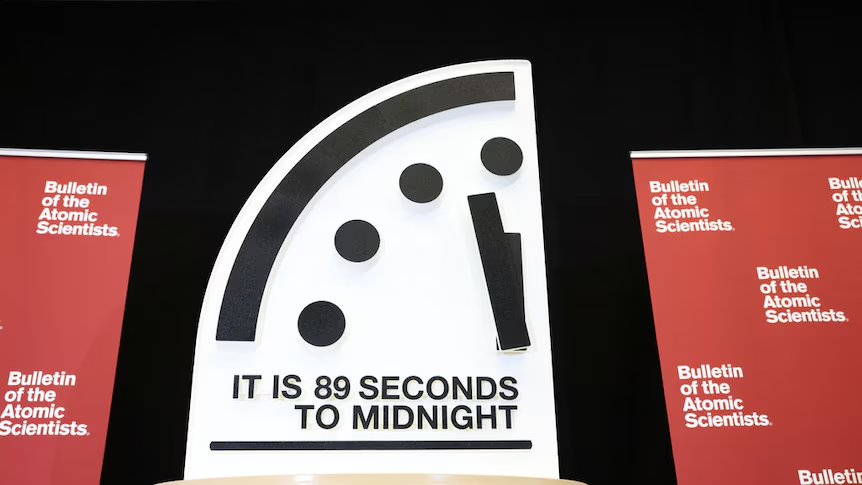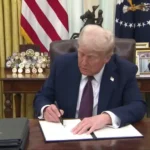The Bulletin of the Atomic Scientists has set the Doomsday Clock to 89 seconds before midnight in 2025, marking the closest approach to global catastrophe since its creation in 1947. This adjustment underscores escalating threats to international security.

Factors Leading to the Doomsday Clock’s Adjustment
Several critical issues have influenced this decision:
- Nuclear Threats: The ongoing conflict in Ukraine has heightened concerns over nuclear escalation, with Russia’s aggressive actions and nuclear rhetoric contributing to global instability.
- Climate Change: Despite increased investments in low-carbon energy, the acceleration of climate change remains a significant concern. The year 2024 was recorded as the hottest year to date, emphasizing the urgency for effective climate action.
- Emerging Technologies: Rapid advancements in artificial intelligence and biotechnology present dual-use dilemmas, where beneficial technologies could be repurposed for harmful applications, posing new security challenges.

Implications for Global Security in 2025
The adjustment of the Doomsday Clock serves as a stark warning about the precarious state of global security. It emphasizes the need for immediate and coordinated international efforts to address these existential threats. Without decisive action, the probability of global disaster increases, underscoring the critical importance of global cooperation and proactive policy measures.

Further Reading:
- Doomsday Clock now closer than ever to midnight: ‘Probability of global disaster’
- Atomic scientists adjust ‘Doomsday Clock’ closer than ever to midnight




Your article helped me a lot, is there any more related content? Thanks!
I don’t think the title of your article matches the content lol. Just kidding, mainly because I had some doubts after reading the article.
Can you be more specific about the content of your article? After reading it, I still have some doubts. Hope you can help me.
Thanks for sharing. I read many of your blog posts, cool, your blog is very good.
Your article helped me a lot, is there any more related content? Thanks!
Can you be more specific about the content of your article? After reading it, I still have some doubts. Hope you can help me.
I don’t think the title of your article matches the content lol. Just kidding, mainly because I had some doubts after reading the article.
I don’t think the title of your article matches the content lol. Just kidding, mainly because I had some doubts after reading the article.
Your point of view caught my eye and was very interesting. Thanks. I have a question for you.
Your article helped me a lot, is there any more related content? Thanks!
Thanks for sharing. I read many of your blog posts, cool, your blog is very good.
Your article helped me a lot, is there any more related content? Thanks!